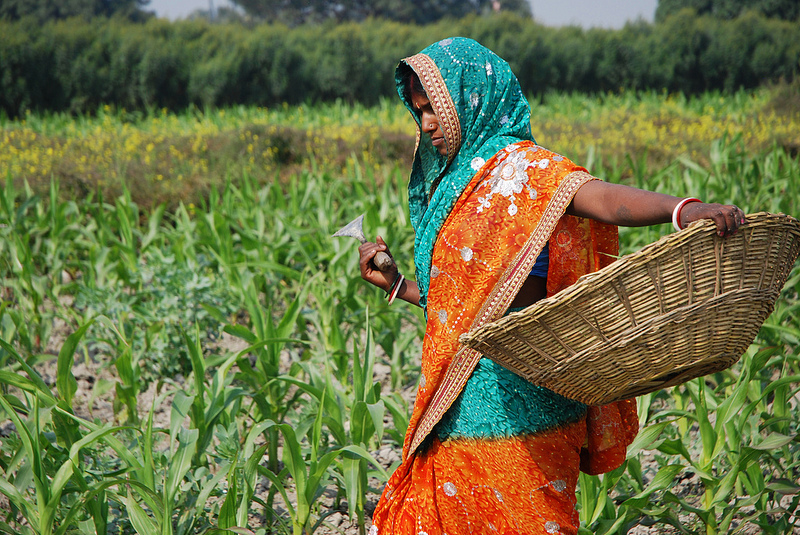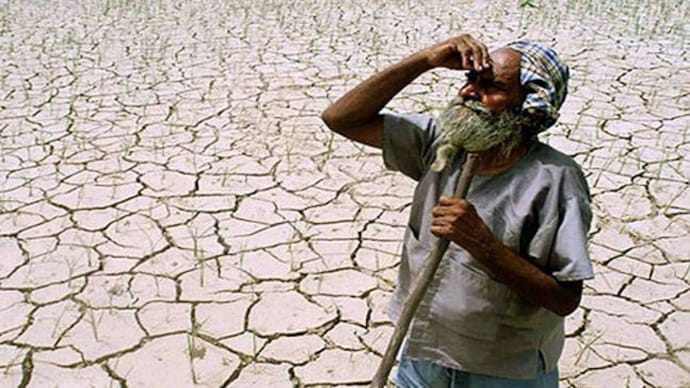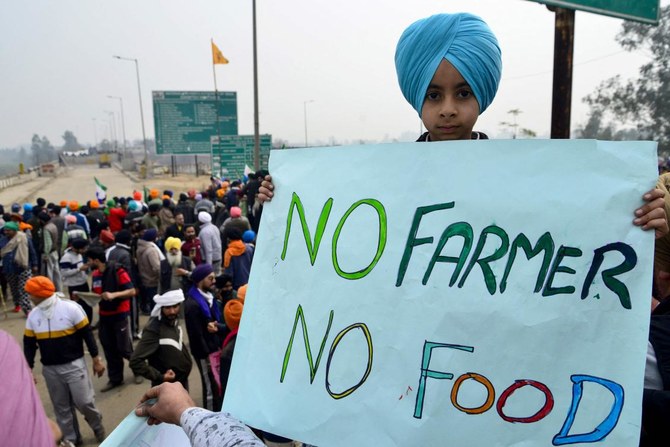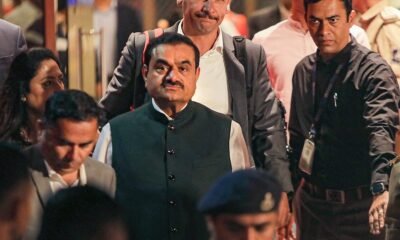Trends
Farmers Protest, A Renewed Push Toward Delhi. How Authentic And Justified Are The Protesting Farmers Angst?
To truly understand farmers protest and angst, it’s essential to move beyond simplistic jargons and dig into the structural issues plaguing Indian agriculture.
Published
3 months agoon

The 2020–2021 Indian farmers protest wasn’t just a demonstration—it was a movement that shook the nation and sparked a fierce debate about the future of agriculture in India.
It all began when three contentious farm laws were passed in September 2020, which farmer unions and opposition leaders slammed as “anti-farmer,” claiming they would hand over too much power to corporates.
The resistance started small in Punjab, but it quickly escalated into a massive march towards Delhi—dubbed Dilli Chalo. Protesters braved water cannons, tear gas, and police barricades to make their voices heard, eventually camping at Delhi’s borders in November 2020.
Despite 11 rounds of talks between the farmers and the central government, no breakthrough was reached, leaving India’s agricultural heartland—Punjab and Haryana, the backbone of the country’s food security—at the center of a nationwide struggle.
What’s Happening Now?
Clearly, the farmers’ protests in India are far from over. The protesting farmers have a series of demands they believe are essential for their survival and dignity.
- At the forefront of their demands is a legally guaranteed Minimum Support Price (MSP), a safety net they’ve sought for years to protect their incomes from market volatility. Alongside this, they are calling for a farm loan waiver—a recurring plea to ease the crushing debt that has pushed many farmers to desperation.
- Retirement is also on their minds, as they demand pensions for farmers and farm laborers—a measure they say would acknowledge their lifetime of hard work in sustaining the country. They are also strongly opposing any hike in electricity tariffs, which directly impacts their already thin margins.
- The farmers have also demanded compensation for the families of those who died during the previous 2020–21 agitation.
- They want justice for the victims of the 2021 Lakhimpur Kheri violence, a tragic episode that left the farming community scarred. Another key demand is the withdrawal of police cases filed against protesters during earlier agitations—a step they see as vital to rebuilding trust with the authorities.
- Reinstating the 2013 Land Acquisition Act is another significant demand.
- Farmers want better compensation for their land—a fourfold increase over the market rate, as provided under the old law, and allocation of 20% plots for land acquired post-2014.
- Additionally, they are calling for employment opportunities and proper rehabilitation for the children of landless farmers and other displaced families.
Struggles with Policy and Market Realities
In February, farmer groups met with Union Commerce Minister Piyush Goyal, rejecting proposals to sell crops like pulses, maize, and cotton to government agencies at MSP for five years. The farmers argue that such temporary solutions don’t address the long-term structural problems in Indian agriculture.

Before we get into the question of how valid their demands are we need to take a closer look at India’s farming population.
The ratio of farmers to the overall population of India is not a straightforward statistic. It fluctuates depending on how a “farmer” is defined and the source of the data.
According to Census 2011, there were 118.9 million cultivators, making up 24.6% of the country’s total workforce. However, other estimates from 2011 vary widely, ranging from 95.8 million to as many as 450 million farmers, which equates to anywhere between 8% and 38% of the population.
However, a press release from the Government of India paints a different picture, claiming that 65% of the population is engaged in agriculture and allied activities. Meanwhile, the Indian Economic Survey 2020–21 notes that over 50% of the workforce is employed in the agricultural sector. This sector includes not just farming but also roles like agricultural laborers, fisheries, and animal husbandry.
Reliability of Agricultural Statistics
Despite these figures, there is considerable debate about their accuracy. Critics argue that official statistics often overestimate the number of farmers while underreporting critical issues like farmer suicides. Conversely, some believe the census and surveys underestimate the number of people indirectly engaged in agriculture or related activities.
This discrepancy however raises important questions about policymaking and the representation of farmers in data-driven decisions. For instance, defining a farmer as someone directly cultivating land might exclude the millions of agricultural laborers and landless workers who depend on the sector for their livelihood.
Farmers vs. Non-Farmers
When looking at the broader population, it is estimated that approximately 58% of Indians depend on agriculture in some capacity, either directly or indirectly. This includes cultivators, laborers, and those working in allied industries like irrigation, food processing, or seed production.
On the other hand, the remaining 42% of India’s population is engaged in non-agricultural activities such as industry, services, and other sectors.
Agriculture’s Role in India’s Economy
Agriculture remains a cornerstone of India’s economy, not just as a source of food but also as a key contributor to GDP. However, its significance is often contrasted with the relatively lower income levels and productivity compared to industrial and service sectors.
This duality shows the challenges farmers face – while they form the backbone of the nation’s economy, their livelihoods remain precarious, further compounded by structural and systemic issues in the agricultural framework.
)
How Real Is Farmers’ Angst?
Do India’s farmers truly understand their economic conditions better than the policy analysts and public intellectuals who draft agricultural policies? Many experts would argue otherwise, often dismissing farmers’ concerns as emotional overreactions.
Take, for example, Bharat Ramaswami’s report to the XV Finance Commission. Drawing on a study by Chand, Saxena, and Rana, Ramaswami asserts that farming has historically been profitable. According to the report, farm income in 2011-12 was 70% higher than the cost of all variable inputs, including hired labor. Even during less extraordinary years, profitability ranged between 40% and 50% during the 1990s and mid-2000s.
But such data often fail to capture the lived reality of farming today. A contrasting picture pushed by certain policymakers and media influencers paints farmers as financially well-off—some even claim that the number of luxury cars in rural areas proves the prosperity of the farming community.
The Reality Is Farming Isn’t Profitable
To address these misconceptions, let’s begin with a simple truth – farming in India is not a path to wealth. Low earnings, rising costs, and an unbalanced Minimum Support Price (MSP) mechanism make farming unsustainable for many.
The Situation Assessment of Agricultural Households (SAAH) survey released in September 2021 provides a sobering perspective.
It reveals that the average agricultural household earns just ₹10,084 per month or ₹1,21,008 annually. Compare this to the average national household income, and you’ll find that farming families earn less than 20% of what the average Indian household does.
What makes the situation worse is the growing reliance on non-farming income.
A significant portion of an average agricultural household’s earnings now comes from labor work or supplementary jobs, not cultivation. This shift indicates a grim reality – farming alone cannot sustain a family, forcing many to seek alternate livelihoods to make ends meet.
Meanwhile, agricultural indebtedness continues to rise. With high input costs, unpredictable market prices, and inadequate MSPs, many farmers are trapped in cycles of debt that only deepen their economic vulnerability.
Even more disheartening is the breakdown of this income. While earnings from farming contribute ₹3,798 per month, income from wages—at ₹4,063—has grown at three times the rate of farming income over the past six years. Thus, farming alone is no longer sufficient to sustain livelihoods, forcing households to seek supplementary income sources.
The Struggles of Small and Marginal Farmers
Small and marginal farmers, who hold less than one hectare of land, make up nearly 70% of India’s agricultural households. Their monthly incomes are often below ₹10,000, pushing them further into poverty.
One bright spot has been animal husbandry, which has seen a 12.9% annual growth in net earnings. However, these earnings still amount to less than half of farm income and come with their own challenges. Animal husbandry is capital-intensive, and rural households, already highly indebted, often lack the resources to invest in this activity effectively.
The issue of debt is equally alarming. While large landholders experience higher levels of indebtedness—80% of these households are in debt—their borrowings are often directed toward revenue expenditure.
Small farmers, on the other hand, allocate 50–80% of their loans toward personal consumption, leaving little room for investment in farming or infrastructure. To make matters worse, small farmers heavily rely on non-institutional sources of credit, which come with exploitative interest rates and terms.
Food Subsidies
The Indian government’s decision to extend the food subsidy program for another five years is indicative of the country’s deep-rooted poverty. While the initiative aims to ensure food and nutrition security for 81.35 crore people, it also shows the systemic failure to address the underlying economic challenges.
The announcement, which proudly declared the scheme as one of the world’s largest social welfare programs with an estimated cost of ₹11.80 lakh crore, inadvertently sheds light on a worrying reality – significant portion of India’s population remains dependent on state aid for basic survival.

Nature’s Unforgiving Role in Farming
Farmers operate in an environment where natural uncertainties—like droughts, excess rains, or pest infestations—have a direct and often devastating impact on yields, output quality, and ultimately, earnings. The decline in gross value-added (GVA) growth after drought years shows this vulnerability.
For example, after the 2002 monsoon shortfall, GVA growth plummeted from 9% to just 0.2%. Similarly, the drought years of 2014 and 2015 saw GVA growth shrink to nearly zero.
These natural shocks also stymie capital investment. A farming household earning a mere ₹10,084 per month cannot afford to invest in infrastructure or equipment in a bad year. This lack of investment further locks farmers into a cycle of low productivity and dependence on external support.
Labour Productivity and the Misconception of Farmer Laziness
Critics often point to low labour productivity in agriculture compared to manufacturing or services. However, this comparison is inherently flawed. The cyclical and peak-oriented nature of farming means that farmers cannot work consistently throughout the year. During non-peak periods, rural India offers few opportunities for supplementary income.
Mechanisation, while theoretically a solution, remains out of reach for most small farmers due to high costs and fragmented landholdings. Even when implemented, mechanisation creates challenges with underutilised capacity during non-peak times unless equipment can be rented out—something that requires additional capital and logistical support.
Furthermore, agriculture’s inability to “scale down” during unfavorable conditions leaves farmers at the mercy of factors beyond their control. While factories can shut down production lines or reduce labour during downturns, farmers cannot simply abandon crops once planted, making their livelihoods especially precarious.
The Urban Exodus and Pandemic Reversals
The lack of opportunities in rural India has traditionally driven migration to cities. However, urban job creation has been stagnant, with workforce participation for the 15–29 age group remaining below 40% for the past five years.
The pandemic reversed this trend, forcing 40 million people to return to rural areas and depend on agriculture. This influx has only added to the strain on the already struggling farming sector, diluting per capita incomes further.

A Renewed Push Toward Delhi
In a determined effort to revive their protest against the Union government, a group of 101 farmers attempted to march to Delhi from the Shambhu point of the Ambala-Delhi Highway on Friday, December 6.
Despite overcoming three layers of barricades, including mesh wires, they were ultimately halted by concrete barriers and tear gas deployed by security forces.
The Kisan Mazdoor Morcha and Samyukta Kisan Morcha (Non-Political) decided to pull back the group following the use of force. However, farmer leader Sarwan Singh Pandher announced that another group of 101 farmers is prepared to march toward Delhi on Sunday, December 8, if the Union government does not initiate talks by then.
Pandher criticized the BJP-led Union and Haryana governments for their actions, stating, “Despite farmers being unarmed, the Haryana police fired tear gas shells at them, injuring several. This shows the government’s true intentions.”He reiterated that the farmers would continue their protests peacefully, emphasizing that they do not seek confrontation.
Pandher also called for a peaceful demonstration against BJP leaders in Punjab, urging them to address the “lack of action” by the Union government regarding farmers’ demands.
The farmers’ primary demand remains the legalisation of a minimum support price (MSP) for crops—a contentious issue that has persisted since the Modi government repealed the three farm laws in November 2021 after a year-long protest. Farmers allege that the government had promised legal guarantees for MSP during the repeal but has since failed to deliver.
Escalation Amid Heavy Security
The BJP-led Haryana government has taken stringent measures to prevent the farmers from proceeding, deploying water cannons along the Ambala-Delhi highway and suspending internet services in Ambala district until December 9. Farmers, holding the national flag, have been appealing to the Haryana police for passage and have consistently assured that their march will remain peaceful.
This latest march comes after an earlier attempt in February, where resistance from Haryana authorities led to one farmer’s death and several injuries. Since then, farmers have been stationed at the Punjab-Haryana borders of Shambhu and Khanauri, resolute in their demand to reach Delhi.
Tensions Mount at Shambhu Border
The atmosphere at the Shambhu border remains tense as Haryana authorities resorted to using tear gas against protesting farmers, urging them to call off their march to Delhi, citing the lack of clearance from Delhi Police.
Despite these measures, farmers remain resolute, declaring their intent to proceed with a peaceful protest regardless of the consequences.
During a press conference on December 5, farmer leader Sarwan Singh Pandher strongly criticized the BJP-led Union and Haryana governments, accusing them of treating farmers like adversaries.
“This doesn’t feel like a Punjab-Haryana border; it feels like an international border. If they [the authorities] had their way, they wouldn’t even let a bird cross. We’re being treated like enemies from another country when we’re citizens of this land, simply asking for our rights,” Pandher stated.
The Last Bit.
It is apt to say that the India’s agricultural sector is rife with contradictions. On paper, some studies might suggest profitability, but the ground reality for millions of farmers tells a different story—one of persistent struggle, low returns, and high risk.
Hence, to truly understand farmers’ protest and angst, it’s essential to move beyond simplistic jargons and dig into the structural issues plaguing Indian agriculture.
A long-term, sustainable solution requires policies that not only address immediate grievances but also overhaul the MSP mechanism, improve rural infrastructure, and provide better financial security for farming households.
Therefore, the road to reform won’t be easy, but the voices of those tilling the soil need to be heard—not drowned out by statistics and assumptions.

You may like
-


Why Is Donald Trump Still Reiterating $21 Million USAID Funding To India, Although It Went To Bangladesh? What Game Is Trump Playing And Why?
-


Adani $265 Million Bribery Scandal Comes Under Spotlight Again. US SEC Seeks India’s Help, Stocks Trade Mixed—Modi’s Dilemma, Protect Or Distance?
-


And The Trade Wars Begin…Disruptions Ahead! Trump’s Promise Of Tariffs Against Mexico, Canada, And China Comes To Fruition, But Not Without Retaliation. Multifold Economies to Be Affected
-


It’s Simple—Indian Govt Isn’t Tightening Spending—It Just Isn’t Spending Enough. How This Has Costed India’s Growth Story
-


When Justice Plays Favorites. The Murder Of Mukesh Chandrakar And India’s Broken System
-


The Spotlight Is Back On Illegal Bangladeshis In India After The Saif Ali Khan Stabbing Case. They Have Jobs, False Identities And Thriving, The Question, How?